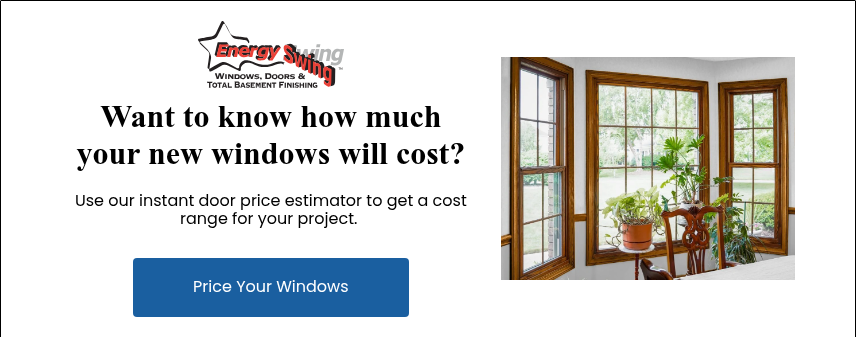Full Frame vs. Pocket Window Replacement: Which Is Right for Your Pittsburgh Home?
May 7th, 2025
9 min read
By Jeff Blank
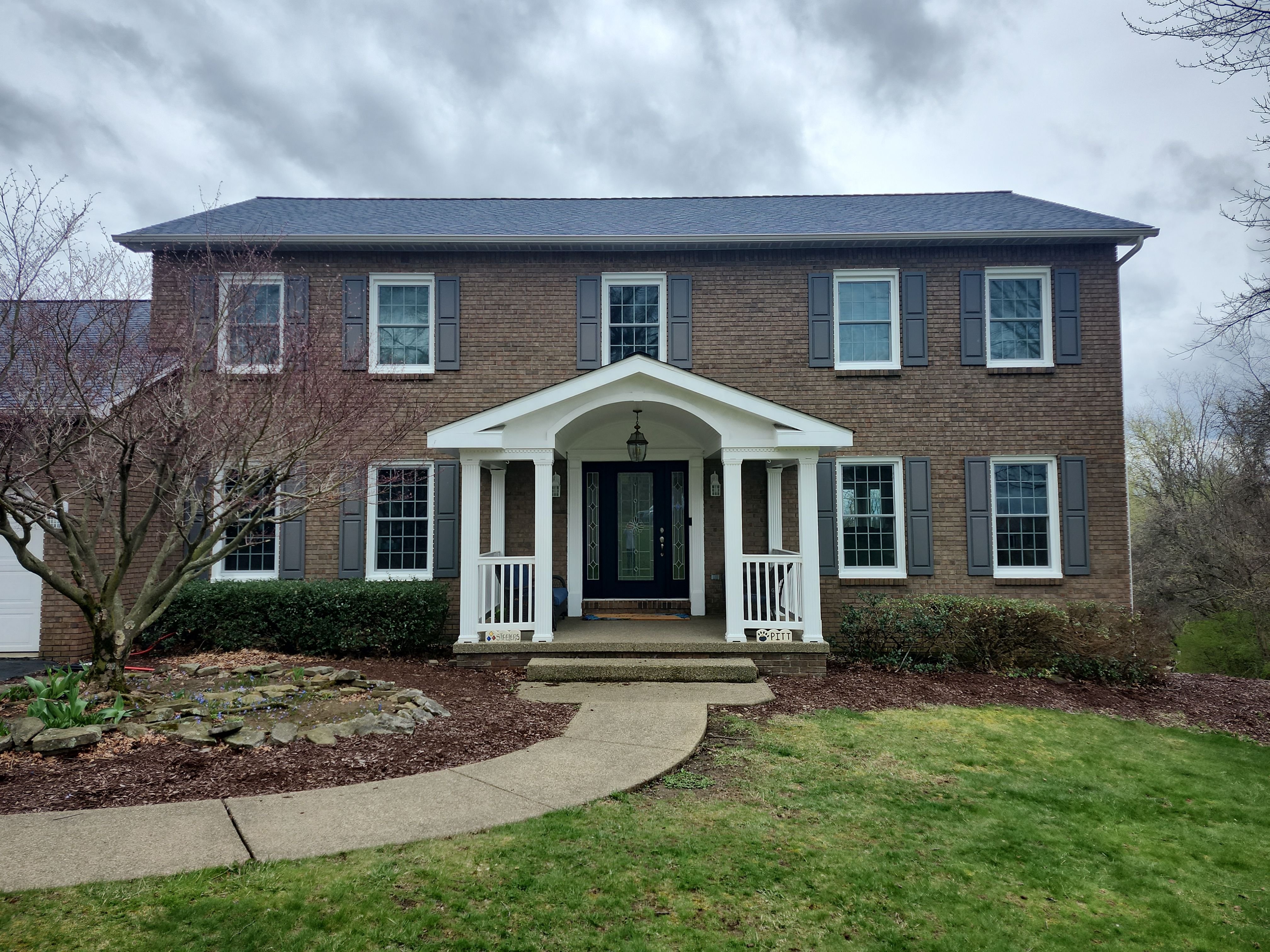
A contractor might have told you that you only need pocket replacement windows, which probably made you even more confused than before the appointment. Understanding the difference between full-frame replacement and a pocket (insert) replacement can be difficult, especially when you aren't well-versed on replacement windows. Which, let’s be honest, most people aren't.
This guide breaks down both methods side by side, so Pittsburgh homeowners can see which replacement delivers the best comfort, efficiency, and value for their home.
At Energy Swing Windows, we’ve helped hundreds of Pittsburgh homeowners like you, navigate this decision and lead them to the best choice for this home and their window opening.
To help you avoid costly mistakes, we’ll break down exactly what each type of replacement entails, the cost differences, energy efficiency considerations, and how to decide which option is best for your home.
Table of Contents
- What is a full frame window replacement?
- What is a pocket (insert) window replacement?
- What is the cost difference between full frame vs. pocket replacement windows?
- Which window replacement is more energy efficient?
- Which style looks best for your home?
- Which window type lasts longer?
- How Long Does Window Replacement Take in Pittsburgh Homes?
- How to choose the right window replacement.
- Frequently Asked Questions
Photo Credit: Bayview Windows
When a Full Frame Window Replacement Is Worth It (and When It’s Not)
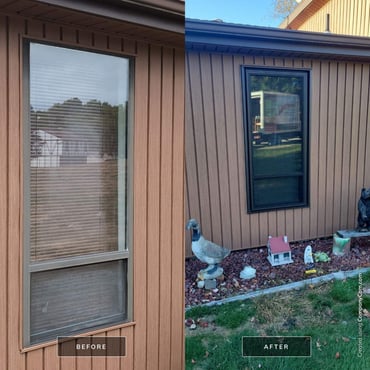
Most aluminum and vinyl windows installed in Pittsburgh homes over the past few decades need a full-frame replacement to ensure the new window is properly supported and sealed.
In simple terms, full-frame replacement means taking everything out; the frame, trim, and sash, and starting from scratch. It gives your home a clean slate, fresh insulation, and the highest chance for long-term performance.
It’s the go-to choice when your current frames are damaged, outdated, or drafty which is especially common in older homes around Mt. Lebanon, Dormont, or Edgewood.
Here’s a quick look at the major pros and cons:
| Pros | Cons |
|---|---|
| Replaces everything, frame, trim, and sash, for a brand-new start. | Higher upfront cost (typically $600–$1,000 more per window). |
| Fixes hidden problems like rot, drafts, and poor insulation. | Takes longer to install (4–8 hours per window). |
| Allows you to change window style, size, or color. | Requires more finishing work inside and outside. |
| Delivers top-tier energy efficiency and weather protection. | Slightly more disruptive during installation. |
| Best long-term investment for aging or inefficient windows. | Not always necessary if your frames are still in good shape. |
Full-frame replacement costs more upfront, but it’s the most reliable way to fix underlying issues and get lasting comfort. If your home has older vinyl or aluminum frames, or if you want to completely change your window look, this could be the best route.
Pocket (Insert) Window Replacements: The Faster, More Affordable Option If Your Home Qualifies
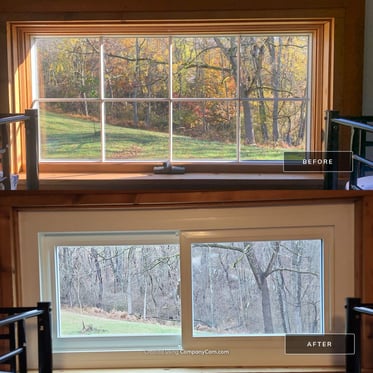
Pocket replacements (also called insert windows) are like a “fit-inside-the-frame” solution. Instead of removing everything, installers keep your existing wood frame and replace only the moving parts.
This method works beautifully if your frames are still solid, especially in Pittsburgh’s older neighborhoods like Squirrel Hill, Highland Park, or Mt. Lebanon, where homeowners often want to preserve the original trim and character.
It’s a cleaner, faster process… but only when your existing frame is structurally sound.
Here’s how the pros and cons stack up:
| Pros | Cons |
|---|---|
| More affordable, typically $600–$1,000 less per window. | Only possible if wood frames are solid and undamaged. |
| Quick installation (2–4 hours per window). | Won’t fix hidden issues like poor insulation or rot. |
| Keeps existing interior trim and historic charm. | Slightly reduces visible glass area. |
| Minimal disruption and clean installation. | Limited design flexibility, must keep existing size and shape. |
| Great for older Pittsburgh homes with original woodwork. | Not compatible with aluminum or vinyl window frames. |
Pocket replacements are perfect for preserving character while saving money and time, but they’re only an option if your wood frames are in great shape. If there’s any damage, you’ll likely need a full-frame replacement to prevent future issues.
Here’s a quick side-by-side look at how full-frame and pocket (insert) window replacements compare across key factors:
|
Factor |
Full Frame Window Replacement |
Pocket (Insert) Window Replacement |
|---|---|---|
|
What It Involves |
Removes the entire old window, including frame, trim, and sill. Rebuilds everything from the rough opening. |
Installs a new window inside the existing frame, only if the frame is in good shape. |
|
Best For |
Homes with damaged, outdated, or aluminum/vinyl frames. Great for full upgrades or style changes. |
Homes with solid original wood frames that are still structurally sound. |
|
Average Cost (per window) |
Typically $1,200–$2,000 more |
Typically $600–$1,200 less |
|
Installation Time |
4–8 hours per window |
2–4 hours per window |
|
Energy Efficiency |
Excellent, new insulation and airtight seal. |
Moderate, depends on the condition of the existing frame. |
|
Aesthetic Flexibility |
High, can change window size, style, or trim. |
Low, must keep existing size and trim. |
|
Durability & Longevity |
Long-lasting since all materials are replaced. |
Dependent on the condition of the old frame. |
|
Disruption Level |
Higher, removes trim and may require interior/exterior touch-ups. |
Minimal, keeps trim intact and creates less mess. |
|
Eligibility |
Works for most homes, especially those with vinyl or aluminum windows. |
Only possible for homes with original wood frames in good shape. |
|
Typical Pittsburgh Examples |
Suburban homes built in the 1980s–2000s with vinyl or aluminum windows. |
Older homes in areas like Mt. Lebanon, Squirrel Hill, and Highland Park. |
If your home’s existing wood frames are solid, a pocket replacement can save time and money. But if you’re replacing older aluminum or vinyl windows, a full-frame replacement ensures lasting performance, insulation, and value.”
Full Frame vs. Pocket Replacement Costs: How Much More Will You Pay?
If you are replacing the original aluminum or vinyl windows, you do not have a pocket insert replacement option. The old frames must be totally removed. If the original wood window frame is still in place, you may have the option of a pocket insert or full frame removal.
Average Cost Difference per Window in Pittsburgh:
Budget plays a significant role in choosing between full-frame and insert replacements. On average, a full-frame replacement typically costs $600 to $1,000 more per window than an insert replacement. Keep in mind, historic homes in Pittsburgh may have additional costs due to preservation requirements.
-
Full-frame replacements do have a higher upfront cost. But, they may actually save you money long-term by improving energy efficiency and eliminating future repair costs. The high cost is because of the extra labor and interior trim work.
-
Insert replacements are a more affordable solution upfront. Unfortunately, they may not address underlying structural issues or provide the same long-term efficiency benefits.
Other Factors That Affect Pricing (Permits, Historic Homes, Labor)
-
Pittsburgh homes with historic details often need full-frame replacements that can be very costly. This is because historic neighborhoods require the windows and frames to be identical to their existing windows, to preserve the style.
-
A minimal cost to be aware of a building permit. If your home is located within Pittsburgh city limits, a building permit can be required depending on the complexity of the project. These usually cost a few hundred dollars.
Consider what works best for your financial situation and long-term goals. Full-frame replacements may offer better insulation and durability.
Which Window Replacement Saves You the Most on Energy Bills in Pittsburgh’s Climate?
Energy efficiency is crucial for Pittsburgh homeowners, given the city's cold winters and humid summers. If you live in an area where homes are historic, like Bloomfield or Mt. Lebanon, consider a few additional factors. The wall construction can be iffy when compared to modern homes. Meaning, existing insulation can be poor or non-existent. If energy savings are a top priority, full-frame replacements are often the better option, especially in old homes.
-
Full-frame replacements provide better insulation because everything is replaced, sealing out old drafts.
-
Pocket replacements help if replaced properly, but only if your existing frames and insulation are still in good shape.
If you’re wondering whether cold weather affects your installation, read our guide to replacing windows in winter.
Which Replacement Style Looks Best for Your Home?
If you're looking to refresh the appearance of your home, both options have their advantages. Full-frame replacements allow for design flexibility, letting you change frame colors, styles, and sizes. Insert windows maintain existing trim and interior details but may slightly reduce the glass area. Your choice depends on how much of a visual change you want to make.
-
Full-frame replacement allows for complete design flexibility
-
Pocket insert installation keeps interior trim but glass size or visibility may be reduced
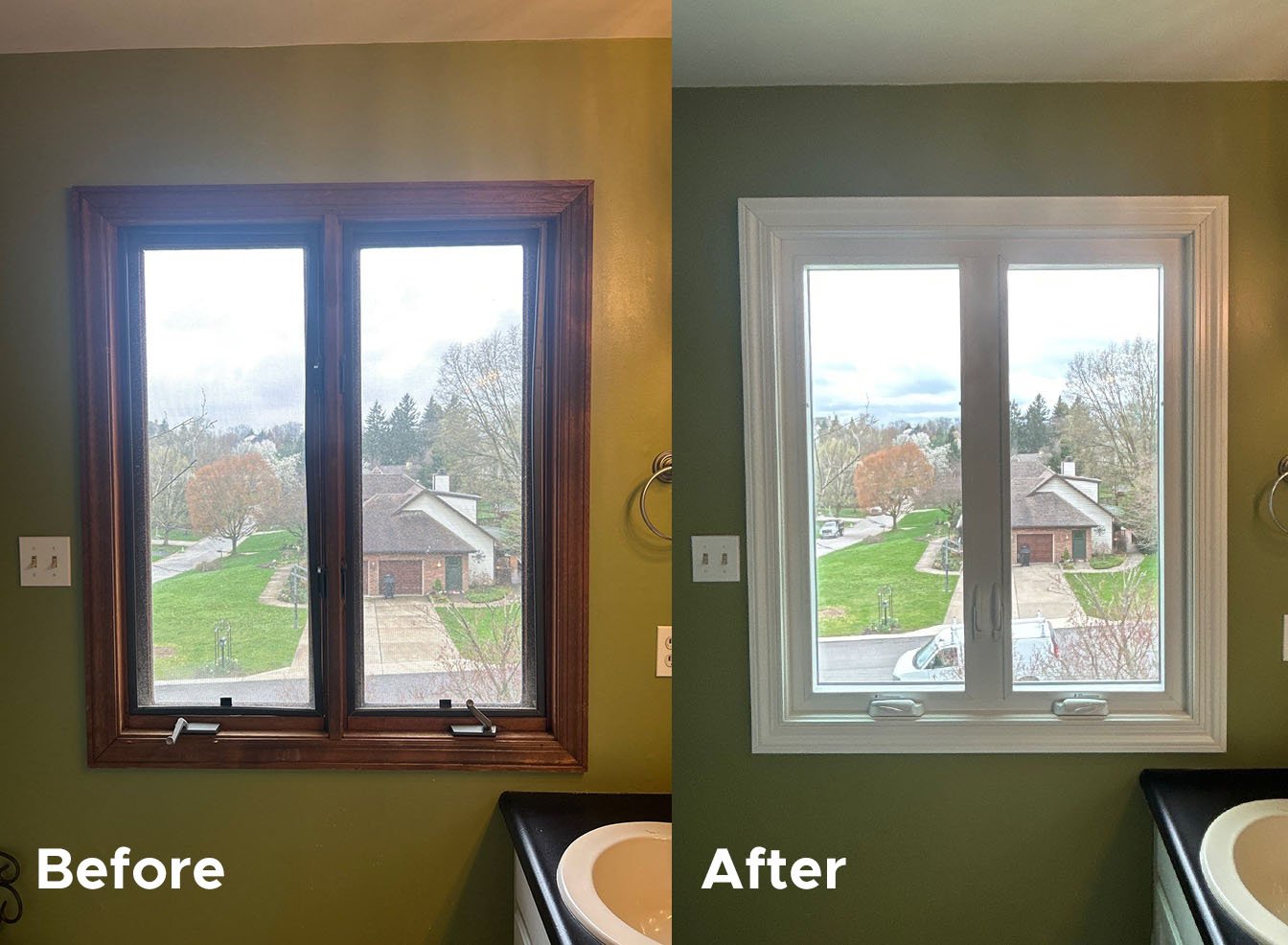
Full frame replacement took this faded, wooden casement window into a bright white vinyl window.
Which Window Type Lasts Longer and Why Durability Matters
A major consideration for homeowners is durability. Full-frame replacements tend to last longer since they replace all components. Pocket insert replacements depend on the existing frame’s condition. Regular maintenance will extend the life of either option, but full-frame replacements generally provide greater longevity.
-
Full-frame replacements last longer since they replace all components, eliminating potential problem areas.
-
Pocket insert replacements depend on the existing frame’s condition. They may not last as long if the original structure deteriorates over time.
How Long Does Window Replacement Take in Pittsburgh Homes?
If you’re looking for a fast and simple upgrade, pocket insert replacements may be the best choice. However, if you’re planning a larger renovation, the extra time required for full-frame replacements may be worth it.
Average Time for Full Frame Replacement
-
Full-frame replacements of an existing wood window frame take longer due to the extensive work involved. A full-frame replacement takes between four to eight hours per window opening. Depending on the complexity of the opening, the time is divided between removing the old frame and applying the interior decorative trim.
Average Time for Pocket (Insert) Replacement
-
Pocket insert replacements are quicker projects and usually take two to four hours per opening from start to finish.
No matter the method you choose, the most ideal time to have your windows replaced in Pittsburgh is during the Spring or Fall. Both you and the installers won’t endure extreme temps of cold or heat. Keep in mind, to get this installation time, you must buy 3-4 months in advance.
If you’re planning your project soon, here’s what to expect during your first appointment with Energy Swing Windows before installation day
Full Frame vs. Pocket: How to Choose the Right Window Replacement for Your Home
As previously mentioned, some window openings don’t have the option to be replaced with one method over the other. That is why it’s important to have a window expert evaluate them and make a plan based on your budget and style needs.
If you do have the option to choose, here are a few key factors to consider:
- Condition of your existing window frames: If they are in poor shape, a full frame replacement is likely necessary.
- Budget: If you're looking for a more affordable solution and your frames are still in good shape, pocket replacements can be a great choice.
- Aesthetic preferences: If you want a completely new look or larger windows, full frame replacement offers more flexibility.
- Long-term investment: If you plan to stay in your home for a long time, a full frame replacement of an old wood window frame may provide better energy efficiency and longevity.
Now that you understand the differences between full-frame and pocket window replacements, you’re in a much better position to make an informed decision. Whether you prioritize cost, energy efficiency, or long-term durability, the best option depends on the condition of your existing windows and your goals for your home.
If your original wooden window frames are still in great shape, a pocket replacement is a cost-effective and efficient option. But if your wood windows are outdated, or damaged, or you’re looking for a complete transformation, a full-frame replacement is the better investment.
Key Takeaways: Full Frame vs. Pocket Window Replacement
- Full-frame replacements are best if your current frames are damaged, drafty, or made from aluminum or vinyl. You’ll pay more upfront, but get stronger insulation, better energy efficiency, and longer-lasting results.
- Pocket (insert) replacements are a great money-saving option only if your existing wood frames are still solid. They preserve your home’s original charm and can be installed quickly with less mess.
- Expect to spend $600–$1,000 more per window for a full-frame replacement, but that investment often pays off through improved comfort and lower energy bills.
- Pittsburgh’s older wood-frame homes (think Mt. Lebanon, Squirrel Hill, Highland Park) may qualify for pocket installs, while newer vinyl-framed homes usually need full-frame replacements.
- The right choice depends on your home’s condition, budget, and long-term plans and an in-home evaluation from Energy Swing can confirm which approach fits best.
Still Not Sure Which Window Replacement You Need? We’ll Help You Decide.
At Energy Swing Windows, we specialize in both options and can help you determine the best choice based on your budget and needs. Schedule your free consultation and get expert advice on your windows!
FAQ's About Full-Frame and Pocket Replacement Windows
1. What’s the difference between full-frame and pocket window replacement?
Full-frame replacement removes the entire old window, including the frame, trim, and sill, and installs everything new. A pocket (or insert) replacement fits a new window inside the existing frame—only if that frame is still solid and in good condition.
2. Which window replacement is more energy efficient?
Full-frame replacements usually offer better energy efficiency because the entire frame and insulation are replaced, sealing out drafts. Pocket replacements can still be efficient if the existing frame is airtight and undamaged.
3. How much more does a full-frame window replacement cost?
A full-frame replacement typically costs about $600–$1,000 more per window than a pocket replacement. The higher cost comes from added labor, materials, and finishing work—but it often pays off through improved comfort and energy savings.
4. Can I get pocket replacement windows if my home has vinyl or aluminum frames?
Usually, no. Pocket (insert) replacements only work if your home has original wood window frames in good condition. Homes built from the 1980s–2000s with vinyl or aluminum windows almost always need a full-frame replacement.
5. How long does each type of window replacement take?
Pocket replacements are quicker, often finished in 2–4 hours per window, while full-frame replacements take 4–8 hours per window because the entire structure must be removed and rebuilt.
6. Which option is better for older Pittsburgh homes?
For historic or older homes in areas like Mt. Lebanon, Highland Park, or Squirrel Hill, a pocket replacement can help preserve original trim and character—if the wood frames are still solid. If not, a full-frame replacement is the safer, longer-lasting choice.
7. How do I know which window replacement type my home needs?
The best way to know is to have a professional evaluate your window frames. Energy Swing’s experts inspect the condition, structure, and insulation of your current frames to help you choose the most cost-effective and energy-efficient option.
Jeff Blank is the Operations Manager at Energy Swing Windows and has been with the company since day one. He oversees every aspect of installation with a deep commitment to doing things right. No shortcuts, no guesswork. With decades of hands-on experience, Jeff is the go-to expert when it comes to what really makes a great installation.

